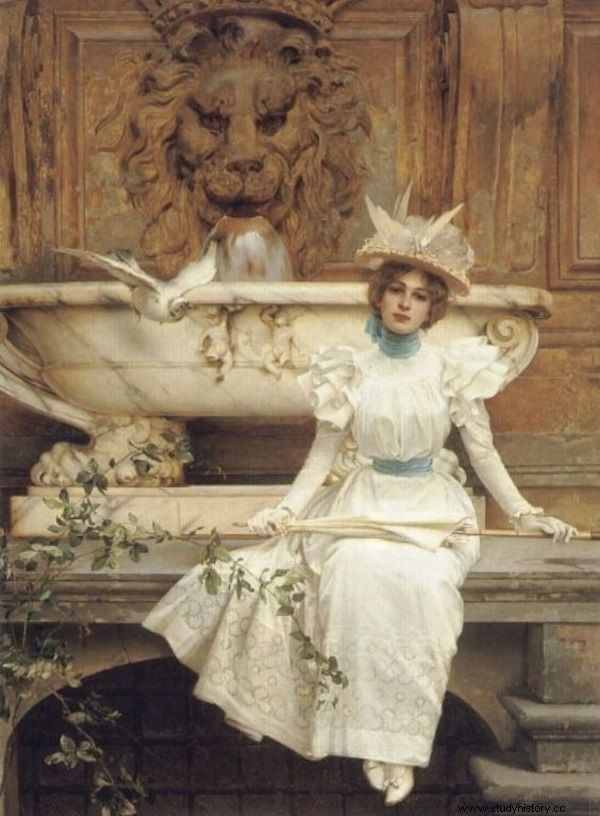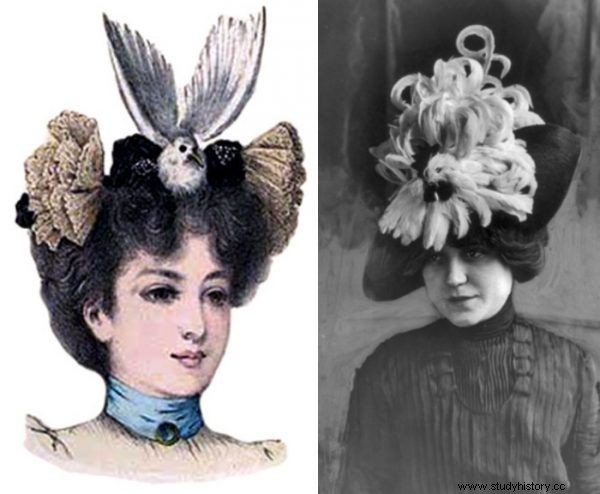Women wore hats not even with feathers, but whole specimens of birds. The macabre fashion has led to the death of hundreds of thousands of individuals. Today, the entire species is threatened with extinction.
In nineteenth-century England, gulls did not have an easy life. In the 1830s, when a passenger line was opened on the west coast, steamboats carrying passengers stopped so they could shoot themselves at birds. When fashion called for seagulls, their fate was almost doomed.
It began with Marie Antoinette, who was crowned French queen in 1774, and her courtiers, whose feathered hairstyles took up half a carriage. And in the decades that followed, the trend only grew stronger, especially in the British Empire.
As Adam Nicolson writes in his book "The Scream of Sea Birds. The dying world of sky wanderers ” In 1891, the Los Angeles Times read that "A well-dressed woman is as fluffy today as a bird that has just been taken out of its nest." Nearly two decades later, another newspaper reported:"If you want to be fashionable in winter, you have to be feathered."
As we know perfectly well from biology lessons, a man, even if he tried hard, would not grow feathers on his own back. The unrelenting fashion for bird feathers therefore had bloody repercussions for the mainstream stakeholders.

A painting by Vittorio Matteo Corcos from the last decade of the 19th century (photo:public domain).
Mass murder of birds
In the nineteenth century, there was no technology to make artificial feathers that successfully pretended to be real feathers. Anyway, the hipsters of that time did not want to be satisfied with half measures.
As Daniel James Cole and Nancy Deihl write in their history of fashion from 1850, in the 1890s:
Feathers, especially ostriches and herons, have become indispensable and their sale and trade has exploded into a large industry. Entire bird wings - and in some cases whole birds - have become dramatic hat decorations. [...] While feathers defined hatmaking fashion, the Audubon Society and other societies protested against the slaughter of birds for the purpose of using them this way.
In order to satisfy the tastes of women who blindly followed hat-making fashion, whole basins specializing in the destruction of bird species arose. In one of the towns of Devon, England, plumes were prepared by hand almost all year round. The village was an ideal place for people with such craftsmanship, as there were cliffs loved by birds nearby.
As a result, in the high season of one day, the skilled picker was able to pluck up to 700 birds. As Adam Nicolson writes in his book "The Scream of Sea Birds. The dying world of sky wanderers ” :
According to one 19th-century estimate, up to nine thousand Lundy gulls were killed in two weeks [island off the coast of Great Britain - ed. ed.] . Even if that is an exaggeration, it seems clear that the three-toed gull population on Lundy (which is now barely a hundred pairs and continues to decline) has fallen prey to frequent and regular hunting.

Another edition of the most fashionable Edwardian hats. I only feel sorry for the birds…
Naturalists in the British Isles had no choice but to save the species. They didn't mean to change fashion or admire the beauty of these birds.
Conservation of biodiversity was more important, and the massive, unregulated hunting pushed the three-toed gulls to the brink of extinction. In 1869, the British Parliament introduced the first law prohibiting the hunting of sea birds during the breeding season. Today, however, the fate of the species is still uncertain. And all the fault of the love of murderous fashion.
